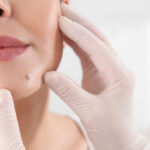When it comes to improving skin appearance and texture, Laser Scar Removal stands out as one of the most advanced dermatological treatments. It leverages the power of focused laser technology to precisely target scar tissue while promoting the regeneration of healthy skin cells. Unlike conventional techniques, this method does not rely on abrasion or physical exfoliation. Instead, it delivers concentrated light energy into the skin’s deeper layers to stimulate collagen production and natural healing. If you’re looking for a highly specialized and minimally invasive approach, Laser Scar Removal in Dubai offers a cutting-edge solution performed by skilled cosmetic dermatologists.
Understanding the Basics of Scar Revision Techniques
There are multiple techniques that dermatologists use to treat scars, but the two most popular ones—Laser Scar Removal and Dermabrasion—differ significantly in methodology and results. While both aim to reduce the visibility of scars, their mechanisms, precision, and recovery timelines set them apart.

What Is Laser Scar Removal?
Laser Scar Removal is a non-invasive cosmetic procedure that uses highly focused laser beams to improve the appearance of scars. Dermatologists perform this treatment using advanced laser systems such as:
- Fractional CO2 Lasers
- Erbium YAG Lasers
- Pulsed Dye Lasers (PDL)
Each type of laser targets different skin layers and scar types. The laser penetrates the dermis and vaporizes scar tissue while triggering collagen production. The outcome is smoother, clearer skin with more uniform texture and tone.
How Dermatologists Perform Laser Scar Removal
Dermatologists begin by assessing the scar type—atrophic, hypertrophic, or keloid—and choosing the laser system accordingly. Here’s what typically happens during the treatment:
- Consultation and Skin Evaluation
The process starts with a detailed skin analysis. Dermatologists determine the depth, texture, and age of the scar. - Laser Type Selection
Depending on the scar’s characteristics, fractional or ablative lasers are selected to achieve optimal results. - Skin Preparation
The treatment area is cleansed, and a topical anesthetic may be applied to minimize discomfort. - Laser Application
The specialist guides the laser device over the scarred area. The laser pulses create micro-injuries in the skin, initiating a healing response. - Post-Treatment Guidance
Patients are provided with customized skincare routines to maximize healing and enhance outcomes.
This precise approach ensures minimal damage to surrounding tissues, a key benefit over physical treatments like dermabrasion.
What Is Dermabrasion?
Dermabrasion is a mechanical exfoliation method that dermatologists use to resurface the skin. Using a rotating instrument—often a diamond-tipped wheel or wire brush—layers of skin are carefully removed to smooth out surface irregularities caused by scars.
This technique works best for raised or superficial scars, especially those caused by acne or surgery. However, it is more invasive than laser therapy and often requires a longer recovery period.
How Dermatologists Perform Dermabrasion
Dermabrasion is typically conducted under local anesthesia. Here’s a general breakdown of the procedure:
- Patient Evaluation
A dermatologist assesses the scar and surrounding skin to ensure the patient is a suitable candidate. - Anesthetic Administration
Local anesthesia or sedation is used, depending on the scar’s location and size. - Mechanical Exfoliation
The dermabrasion tool is applied to remove the epidermis and a portion of the dermis. This smooths the skin’s surface and reduces scar prominence. - Wound Care Instructions
Post-procedure, patients are advised to follow specific care routines to avoid infection and promote healing.
Dermabrasion is a skilled manual process that requires deep understanding of skin layers to avoid complications and pigmentation issues.
Key Differences Between Laser Scar Removal and Dermabrasion
| Feature | Laser Scar Removal | Dermabrasion |
|---|---|---|
| Method | Laser energy for targeted skin renewal | Mechanical exfoliation of skin layers |
| Precision | Highly precise; adjustable depth control | Less precise; manually controlled |
| Ideal For | Various scar types | Superficial and raised scars |
| Downtime | Minimal to moderate | Moderate to extensive |
| Collagen Stimulation | Actively stimulates collagen production | Passive healing response |
| Technology Dependency | Requires specialized equipment | Requires specialized tools |
| Side Tissue Damage | Minimal | Possible bruising and bleeding |
Why Dermatologists Prefer Laser Scar Removal
Most modern dermatologists favor Laser Scar Removal over dermabrasion due to the following reasons:
- Enhanced Accuracy: Laser energy can be fine-tuned to reach specific depths, which is especially beneficial for treating deeper scars.
- Reduced Risk: Lower chances of post-inflammatory hyperpigmentation and infection.
- Controlled Healing: The laser method promotes neocollagenesis—new collagen growth—without excessive trauma to surrounding skin.
- Customization: Lasers can be adapted for different skin tones and scar types, making it more versatile.
This makes laser treatment a go-to solution in advanced cosmetic dermatology.
Benefits of Laser Scar Removal Over Dermabrasion
- Minimal Invasiveness
Laser therapy involves no physical contact, reducing the risk of tissue trauma and infection. - Faster Recovery
Since the laser targets precise layers, healing time is typically quicker than with dermabrasion. - Suitable for All Skin Types
With adjustable laser settings, dermatologists can treat various skin tones and sensitivities. - Consistent Results
The automated nature of laser technology ensures uniformity, unlike the manual nature of dermabrasion. - Long-Term Improvement
Laser therapy continues to improve skin texture over time as collagen builds up post-treatment.
These advantages make Laser Scar Removal in Dubai an ideal option for individuals seeking safe, high-tech solutions performed by experienced dermatologists.
Best Candidates for Each Treatment
While both treatments serve to minimize scars, the best candidates differ slightly:
- Laser Scar Removal
Best for patients with deep, discolored, or pitted scars. Suitable for various skin tones and sensitive skin. - Dermabrasion
Recommended for individuals with fair skin and raised or superficial scars. Not ideal for darker skin tones due to pigmentation risks.
Dermatologists conduct thorough evaluations before recommending a treatment plan tailored to the patient’s unique skin structure and scar history.
How Dermatologists Ensure Effective Results
Experienced dermatologists rely on the following practices to ensure optimal outcomes:
- Advanced Imaging Techniques
High-resolution imaging tools help map out scar dimensions before initiating treatment. - Layer-by-Layer Treatment
For laser procedures, only targeted areas are affected, leaving surrounding tissue untouched. - Combination Therapies
In some cases, dermatologists may use fractional lasers in combination with microneedling or chemical peels for enhanced results. - Post-Treatment Monitoring
Scheduled follow-ups ensure that healing is progressing as expected and allow for adjustments if necessary.
Such comprehensive care ensures patients receive the best and safest results.
FAQs
Q1: Can both treatments be used together?
Yes, dermatologists sometimes combine dermabrasion with laser therapy for complex scar cases. However, this is done cautiously and under strict supervision.
Q2: Is one treatment more painful than the other?
Laser treatment typically causes mild discomfort, while dermabrasion may be more painful due to its invasive nature. Both are done under anesthesia.
Q3: Do these treatments work for all scar types?
Laser treatments are versatile and effective on most scars, while dermabrasion is better suited for surface-level or raised scars.
Q4: How many sessions are needed for visible improvement?
Laser therapy may require 2–4 sessions, depending on scar depth. Dermabrasion often shows results after one session but may need follow-up procedures.
Q5: Are there risks of pigmentation changes?
Dermabrasion carries a higher risk of hyperpigmentation, especially in darker skin types. Laser technology can be adjusted to reduce this risk.
Conclusion
While both Laser Scar Removal and Dermabrasion serve to improve the appearance of scars, their mechanisms and outcomes are quite different. Laser therapy offers a high degree of precision, promotes long-term skin health through collagen stimulation, and minimizes recovery time. Dermatologists increasingly recommend laser treatment due to its versatility, safety, and effectiveness across a wide range of scar types and skin tones. By selecting a trusted provider, individuals can achieve transformative results with Laser Scar Removal in Dubai, the modern choice for professional dermatological care.
































